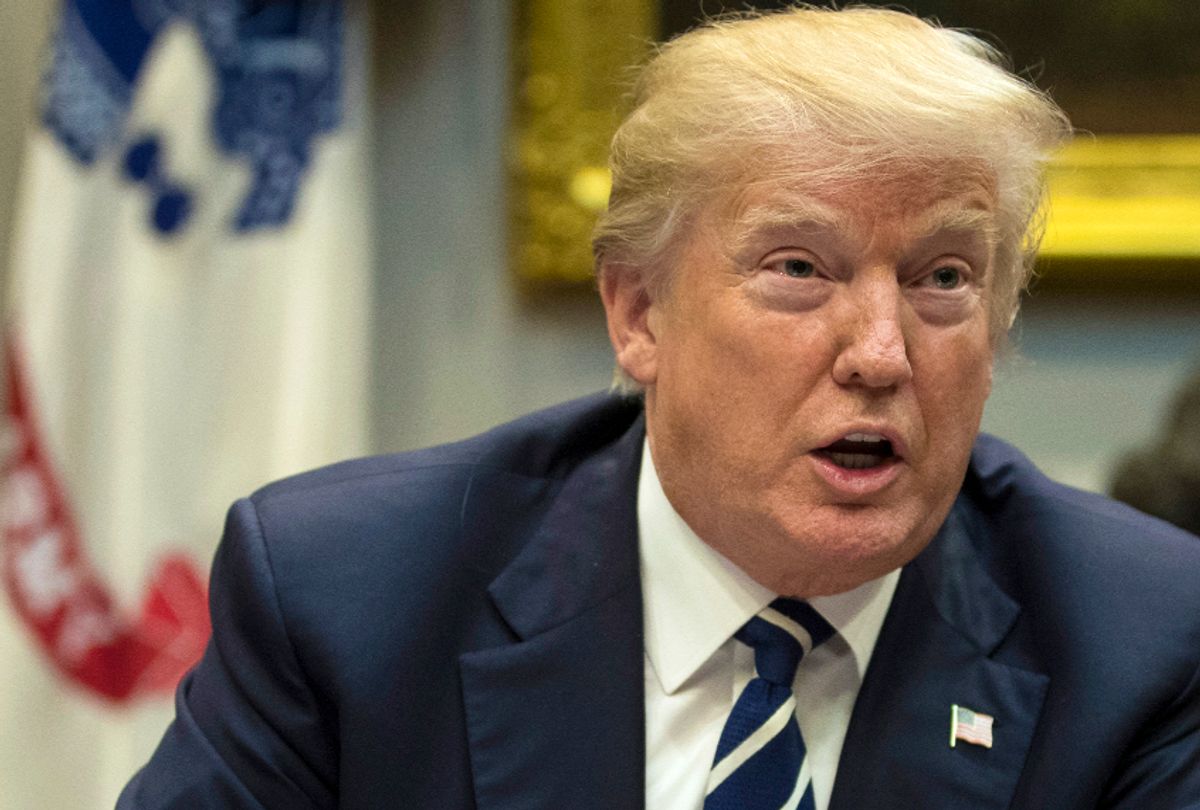 Donald Trump has long been keen to defend U.S. workers from the “carnage” of “bad trade deals.”
Donald Trump has long been keen to defend U.S. workers from the “carnage” of “bad trade deals.”
To that end, he has now decided to impose tariffs and quotas on imports of steel and aluminum. He also threatened the EU with trade barriers on automobiles and could take even more measures on intellectual property rights and technology goods.
It is more plausible than not that this is the beginning of a costly tit-for-tat whereby U.S. trade protection will be countered by others.
The bad news is that a fully-fledged trade war would create serious economic damage. Recent estimations by Ralph Ossa from the University of Chicago indicate that a global trade war, resulting in a rise in trade barriers for all countries, would slash real incomes by an average 3.4%.
At the global level, this would correspond to a loss of almost one full year of growth efforts.
Case study: U.S. safeguard tariffs on steel 2002-2003
Trump’s move is surprising in that it will negatively impact the U.S. economy, although the extent of harm would be limited to the loss of jobs in the user industries of the protected sector.
This can be illustrated with the case of the U.S. steel safeguard tariffs between March 2002 and December 2003. Back in 2002, mounting competitive pressures on the steel industry led President George W. Bush to impose safeguard tariffs ranging between 8% and 30% on ten steel product groups, with a total of 272 tariff lines.
Steel imports from NAFTA countries, from other preferential trade agreement parties (Jordan and Israel) and from 100 developing countries were exempted. Moreover, around 1,000 firm-specific exemptions were granted by the U.S. Trade Representative at the time.
As a result of trade restriction, U.S. imports of steel products declined by 5% between 2002 and 2003, bringing the steel industry sector’s trade deficit down by 28%. However, immediately after the protection ended, import growth rebounded and contributed to a rapid widening of the industry’s trade deficit, above the levels from pre-protectionist era (Figure 1).
Figure 1. U.S. trade in iron and steel industry

Source: Own elaborations Flossbach von Storch Research Institute based on data from OECD STAN Bilateral Trade in Goods by Industry and End-use (BTDIxE)
The protection of the steel industry produced negative spillover effects to other parts of the U.S. economy. Steel is a key input in several industries, among others manufacture of basic metals, manufacture of fabricated metal products, manufacture of electrical equipment and manufacture of machinery and equipment not elsewhere classified.
Taken together, the steel-using industries generated in 2001 far more value added than did the steel industry itself and employed 57 workers for every employee in the steel industry.
How did it end?
Nine WTO members (Brazil, China, Chinese Taipei, the EU, Japan, Korea, New Zealand, Norway and Switzerland) opposed the safeguard measures in the WTO. It was found that the safeguards violated WTO rules by failing to show a “causal link” between increased imports and “serious injury” on the U.S. side.
Also, the U.S. government did not provide comprehensive and appropriate evidence of “unforeseen developments” of steel imports explaining their increase. Due to the continuation of non-compliance of the U.S. with the WTO ruling, the EU was authorized to raise retaliatory tariffs on U.S. goods.
It targeted, among others, citrus fruits and textiles, with the aim to build up internal opposition to the U.S. protectionism among various U.S. industries. Safeguard measures on steel were eventually terminated by the United States in December 2003.
Make trade or perish
There should be no doubt that unfair trading practices undermine the harmonious functioning of the global trading order. But the WTO’s dispute resolution has exactly the aim to assist discordant trading partners in a peaceful resolution of trade tensions.
As a matter of fact, the U.S. enjoys an above-average success rate in disputes that have been decided at the WTO since its foundation in 1995. At the same time, some WTO rules might be indeed outdated and could be renegotiated to better reflect the changing nature of trade today.
Finally, the lack of an investment treaty between the U.S. and China adds considerable fuel to the flames. After all, if such an investment treaty existed, it would assure fair access to reciprocal markets for multinationals.
Should Donald Trump push ahead with protectionist pledges, a tit-for-tat trade conflict or at least elements thereof would be unavoidable. Smaller muscle flexing with respect to single industries would probably not harm the overall economic picture. However, a fully-fledged trade war would be detrimental to both the United States and its trading partners.
Conclusion
More generally, the current Trump administration’s strategy reflects a false diagnosis of the underlying problem of chronic current account deficits registered by the United States.
As long as U.S. excess consumption is financed by savings from abroad, there is no economic reason for current account deficits to improve. Protectionism only reallocates the deficits among sectors.
Equally significant, under the twin deficit scenario, these trade deficit could get even worse, should the recent major tax cuts significantly worsen the outlook for the U.S. fiscal balance.
With regard to protectionism and trade wars, Donald Trump should heed the warning of his illustrious predecessor Thomas Jefferson that “the most successful war seldom pays for its losses.”



Shares